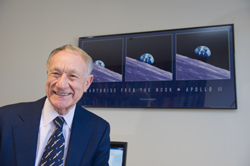Is a More Sustainable Olympics Possible?: Q&A With Maxwell Professor Matthew Huber
Organizers of the 2024 Paris Olympics are committed to creating the most sustainable Games ever—limiting new construction, sourcing local food and using 100% renewable energy, for example. But could a global event with millions of people from all over the…


 As a graduate student at Columbia University in the early 1960s, Henry Lambright immersed himself in government and political science studies only to discover that his true passion lay a bit farther afield—in outer space. Not surprising, perhaps, at a time when NASA’s full-throttled effort to beat the Soviet Union to the moon had become something of a patriotic obsession and starry-eyed youngsters everywhere dreamed of growing up to be astronauts.
As a graduate student at Columbia University in the early 1960s, Henry Lambright immersed himself in government and political science studies only to discover that his true passion lay a bit farther afield—in outer space. Not surprising, perhaps, at a time when NASA’s full-throttled effort to beat the Soviet Union to the moon had become something of a patriotic obsession and starry-eyed youngsters everywhere dreamed of growing up to be astronauts.